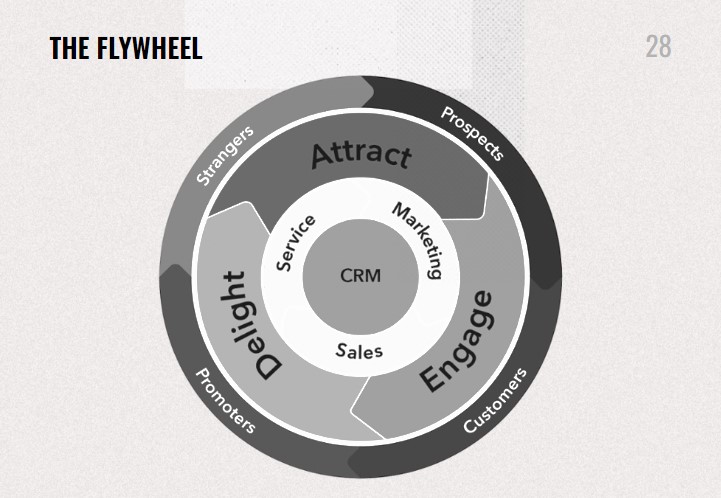Welcome to episode two of our Friends-themed data-driven content series.
In our first episode, we all agreed that we’ve gone a bit SEO-mad when it comes to our content marketing, asking prospects to marry us as swiftly and frequently as Ross.
Not sure what I’m on about?
Read the first post, first.
You’re back? Great!
As I was saying…
Maybe you’ve been going for the hard sell and just pumping your website full of keyword-loaded content until it’s at bursting point, like Joey after eating a whole Thanksgiving turkey.
Maybe you’ve missed out on nurturing prospects with a data-driven content strategy that brings you that all-important revenue.
In blog one we covered why content marketing exists (to nurture your prospects through the stages of awareness).
We took a look at the marketing funnel, with ToFu, MoFu, and BoFu – then introduced our very own stage of awareness from our unique content marketing methodology: truth-aware! Forming the AfFu part of the marketing funnel (after-sale).
I can hear some more questions buzzing around your brain, like:.
“What copy and content might you use or optimise at each stage of the funnel?” And, “how do you know what copy and content will resonate with your customers?”
Good questions! So let’s dig into the weeds of what this actually looks like. But first, let’s get back to what this is all for, and channel our inner Monica for some well-organized strategies.
1, 2, 3… Revenue!
To state the obvious, we’re all trying to build revenue.
And we do that in the following three ways:
- Increasing traffic
- Increasing conversions
- Increasing Customer Lifetime Value (CLV)
That number three is the one that is so often overlooked by marketers. It’s the AfFu stuff and it’s this aspect of the customer journey that is not served by the traditional marketing funnel.
And so, we prefer to think of Hubspot’s flywheel.
Do you remember the first time you rode a bike down a hill?
It can be scary. But it can also be pretty freakin’ exhilarating. How quickly you can build momentum and speed when you’re flying down the street on wheels.
I remember racing a friend down a hill on our bikes as kids.
Within seconds I was going worryingly fast.
My fingers grazed the brakes.
But my competitive streak kicked in.
I decided there was no way my friend was using his brakes, as he sailed along next to me, the picture of ease.
I was sweating with fear but desperate to prove myself.
It all ended badly as I turned on gravel at the bottom of the hill.
But in marketing, building flywheel-momentum ends well.
With soaring ROI’s.
This flywheel came about as a response to the digital world we are living in and how it has changed the way prospects travel through the sales pipeline.
They might skip the middle funnel content altogether.
And then take themselves through a sales process without using your sales team.
But most importantly for your business growth, they can become a significant referral base. Recommending you to friends and family at the click of a button.
The idea of the wheel is that you offer a positive experience for your customers at every touchpoint during the sales cycle. Your wheel will build momentum as your customers feed new leads in and become your biggest marketing asset.
Copy and content are crucial parts of helping your customers have a positive experience.
You simply can’t afford to overlook it if you want to avoid unremarkable revenue.
Or even a spectacular crash.
Because how else will you create that all-important emotional connection with their desires and pain points?
How else will you build trust?
How else will you communicate how you can solve their problems?
Don’t fret though, this isn’t an emergency.
We’ve got you covered, just keep reading.
The digital customer journey
At TCC we break this customer journey down into five measurable parts:
Let’s take each one and look at how your content strategy will support your goals and KPIs.
#1 Traffic
This is top-funnel content, right? So our goals are based on how we can minimise costs and increase traffic.
Our goals are to:
- Increase the total number of visitors
- Increase visitors per channel
- Decrease cost per visitor
How copy/content helps
Your copy and content gets eyes on your brand and clicks to your website. These are the types of content you’ll be using at this stage:
- PPC ad copy
- Organic (SEO’d content)
- Social media, PR, and thought leadership
But in a saturated online world, your brand voice needs to be clear, compelling and consistent.
And your copy needs to grab attention.
Or you’ll get lost in the general hubbub.
Think of Janice’s voice, laugh, and signature phrase’.
Though you may not choose to be nauseating, you can’t argue with the fact that she certainly stands out.
This is also where our friend, SEO, comes in. But we’ve found that traffic-building content only tends to work alongside an excellent brand strategy. (This post will help with that.)
#2 Web conversion
This is where well-crafted content is worth its weight in gold.
Granted, it doesn’t weigh anything.
But imagine it’s the same weight as my vintage typewriter.
Here, our goal is to increase % conversion rate from visitors to MQLs (Marketing Qualified Leads) (by page, by lead-source).
How copy/content helps
Using conversion copywriting techniques, we can optimise the words we’re using on our websites and other middle funnel content so that they are as powerful and compelling as possible to our prospects.
We would use conversion copywriting in the following content:
- Website copywriting + landing page copywriting
- Lead magnets
- Chatbot scripts
#3 Nurturing
This is where we’re winning and dining our prospects and earning their trust through value-driven content. With the help of some metaphorical focaccia and an imaginary full-bodied chianti, Our goals are to:
- Increase % conversion rate from MQL to SQL
- Increase the speed of conversion
How copy/content helps
Through using the following content with a clear brand and consistency, we can stay in our prospects’ minds and be the number one choice when they’re ready to buy.
- Email nurture sequences
- Remarketing ads
- Newsletters and blog content
#4 Sales
We’re all friends here, right? So let’s drop the niceties and be honest with each other.
We want to sell to more customers. And we want them to buy more from us.
Sometimes, things really are that simple.
So, the goals and KPIs are:
- Increase % conversion rate from SQL to deal won
- Increase order value
How copy/content helps
At this stage, marketing teams aren’t always involved. And therefore, neither are copywriters.
Yet if copywriters can work their magic on your sales assets, you can be sure to increase that conversion percentage.
You can get them to look over the following:
- Sales collateral (e.g. sales decks, demo pitches, and templated emails)
- Core web copy and BoFu content assets (like case studies and testimonials)
#5 Post-sale care
Yep. I’m banging my AfFu drum again.
This bit is so often missed out in content strategies.
To increase revenue we want to:
- Increase Average Customer lifetime value (CLV)
- Increase retention length
- Increase referrals per customer
How copy/content helps
With our copy and content, we can continue that relationship with our now customers.
They can benefit from our continued investment in their use of the product.
You know, that email newsletter that offers five hacks for maximising the product (plus an upsell).
And we can benefit from them becoming lifelong fans, repeat buyers, and referrers.
The following content options are helpful for this stage:
- Upsell/cross-sell email sequences
- Employee advocacy content
- Referral marketing content
- AfFu newsletters
So, that’s the digital journey.
If you’re still with me, you’re doing a great job. But before we wrap this episode up, let’s look at the key to unlocking copy and content that does the job.
How do we know what copy and content will work?
Data. Data. Data.
I’ll say it once more.
Data.
One of the biggest mistakes we can make is to assume what motivates our prospects.
I bet you can think of many rows with your significant other that have come about because of assumptions.
We need to gather insights about our customers, current and new.
These insights should include:
1) Pains and triggers
2) Desired benefits
3) Perceived barriers
4) Comparisons factors
5) Buyer journeys
6) What they think being on a break actually means
We can collect this data via both explicit and implicit methods.
Check out this delightful slide that lays it all out for you.
The best is yet to come
Here’s what we’ve covered so far:
- Why content marketing is important
- The essential and often neglected stage of the funnel (AfFu)
- How to optimise your copy and content at every stage of the funnel
- And, how we know what copy and content will work
If that wasn’t enough, there’s even more to come (rubs hands together in gleeful manner).
Check out episode number three for examples of content strategies for three brands.
This will tie it all together nicely, like a sparkly ribbon on a meticulously gift-wrapped present.
See you there.


